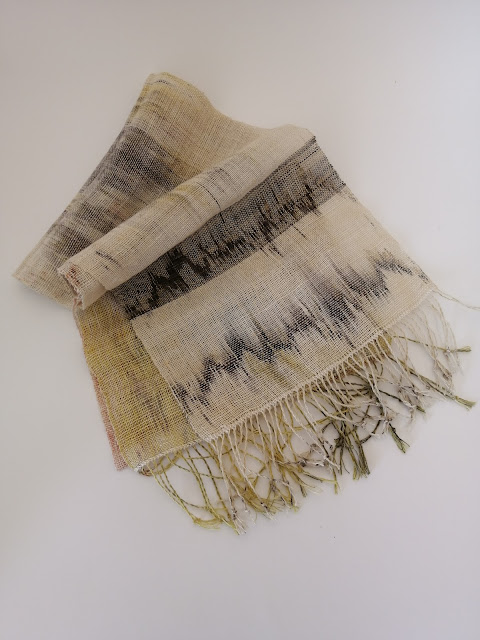 |
| Sylvie's loom set up for overshot weaving. Photo courtesy of Sylvie Mitford. |
In this episode we talk with mentor Morgaine Parnham, and apprentice Sylvie Mitford who are two participants of Heritage NL’s Mentor-Apprentice Program.
Morgaine has been a practicing craftsperson for over 10 years. She graduated from the College of the North Atlantic Craft and apparel design program in 2012 majoring in Print and Dye, Surface Embellishment and Weaving. After graduation Morgaine held a studio at Quidi Vidi Village Artisan Studios. Later she moved to Bonavista to open her own craft shop and weaving studio. Aside from formal training Morgaine learned a lot from her mother who has been informally teaching Morgaine since she was a child. Morgaine has experience teaching group workshops to both adults and children.
 |
| Sylvie posing with her finished woven bedspread. Photo courtesy of Sylvie Mitford. |
Sylvie has been interested in weaving since she was a teenager, and has moved from a simple handmade loom to a floor loom. She has woven scarves, wraps, blankets, tea towels and yardage. Sylvie is a knitter and sewer and also has an interest in natural dying. She wants to learn more advanced weaving techniques and weave structures, and also learn how to spin, and make use of the local wool from the sheep in Bonavista.
 |
| One of Sylvie's finished products! Photo courtesy of Sylvie Mitford. |




































